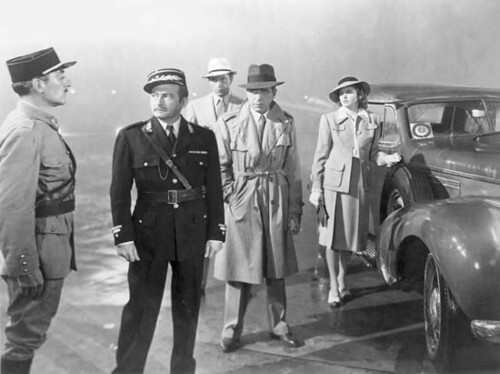Although I don’t have casual, imaginary conversations with
Abby Wambach like Allen does with Bogart in
Play It Again, Sam, she is my voice of cool. Wambach is a forward for the United States women’s national soccer team. Not only do I idolize her as an athlete but also as a person.
I “discovered” Abby while watching my previous guide for cool, Mia Hamm, play in a
WUSA game in 2003. Wambach’s style of play caught my eye because she plays exactly how I hope to one day. After watching her in interviews and on youtube videos, I realized she embodies exactly my version of cool; she’s an
amazing athlete who’s funny, cute, and
laid-back, yet determined and successful.
Abby embodies cool more than anyone else because she has all the ingredients of the
ideal cool. Within the realm of soccer, Wambach is tough, fearless, determined, successful, competitive, and
confident while still
enjoying the game and achieving success. She is
goofy and fun but still able to be serious and focused. Wambach’s passion for the game is unbelievable and her
training routine is intense. She is currently the best women’s soccer player in the world, but you would never know it from watching her youtube videos; she is completely down-to-earth. Wambach hasn’t had an easy career, she has faced injuries, like most other athletes, and rebounded quickly and flawlessly. This year she
broke both her tibia and fibula during a game which put her out of the Olympics, something she had been working her entire life for; yet, she was still able to collect herself after the injury and support her team. Also during the first World Cup game in 2007, Abby collided during a
header and cut her forehead open; she went off the field had 10 stitches in her head and went back into the game. In my own soccer career, I’ve faced injuries and tried to act as cool as Wambach during recovery and post-recovery; she is an all around cool soccer player.
Even though her soccer skills are more than enough to make Abby my voice of cool, her personality makes her even more fit for my ideal model of cool. Wambach’s
fun and outgoing personality mixed with her ability to focus and be serious, is cool. She is the one who initiates the funny, harmless pranks and jokes on her fellow teammates off the field then steps on the field and puts her game-face on. She keeps everyone smiling and laughing while keeping them focused at the same time.
She is confident and dresses and carries herself consistent with my attitude of cool. Even in
situations where she should be nervous or self conscious, she isn’t. Abby’s confidence and likeability give her a cool personality.
I listen to Wambach’s voice of cool for at least two hours every day while I train for soccer and sometimes more when I’m trying to emulate her behavior off the field. Abby is an amazing source of inspiration for me when I train, and my trainer, knowing this, asks me “what would Abby do?” whenever I need inspiration. There are also times when I should be nervous or self conscious off the field, and instead, I just think about the way Wambach would act in a particular instance.
Abby Wambach is my ideal version of cool, and she embodies that definition in all areas of her life.









